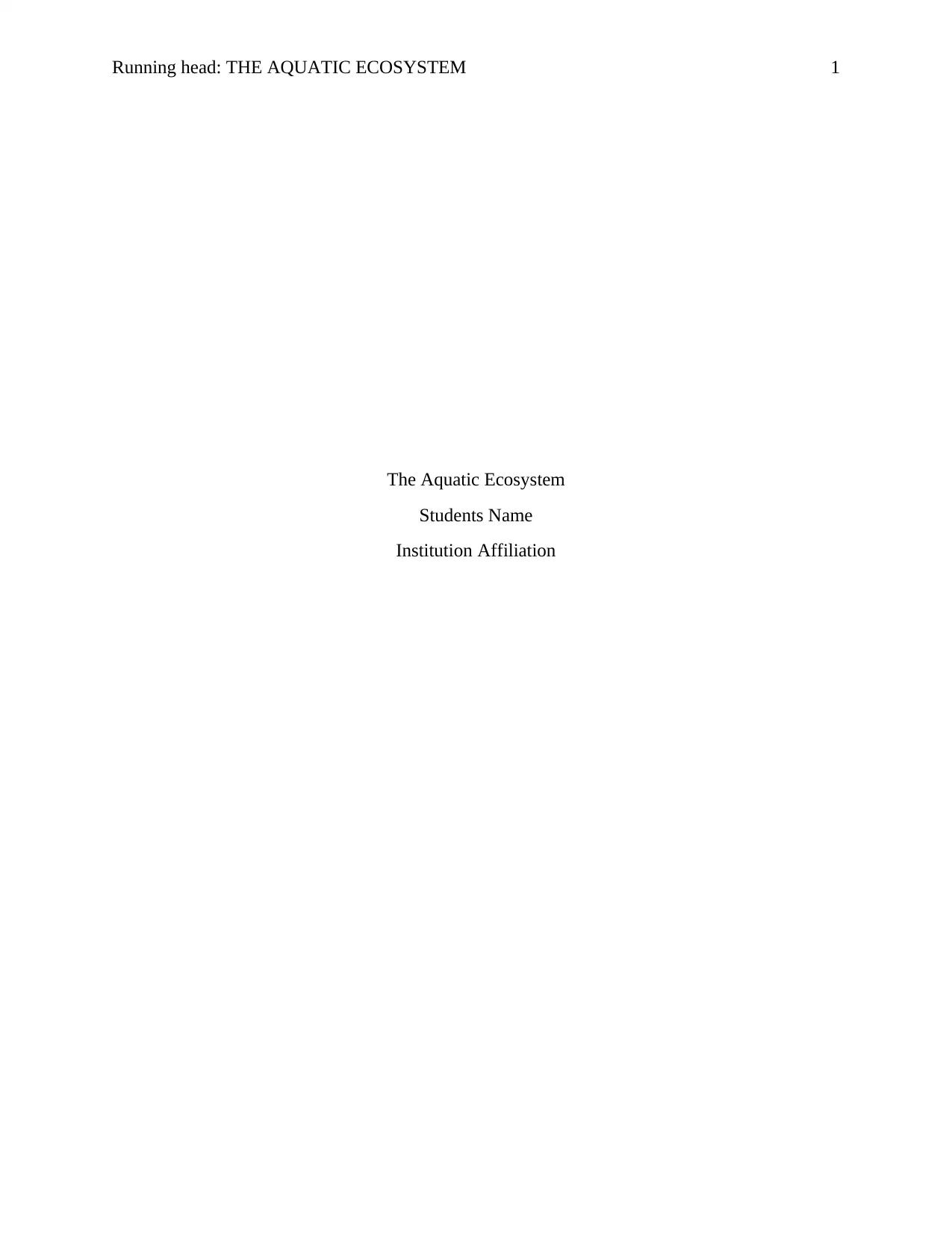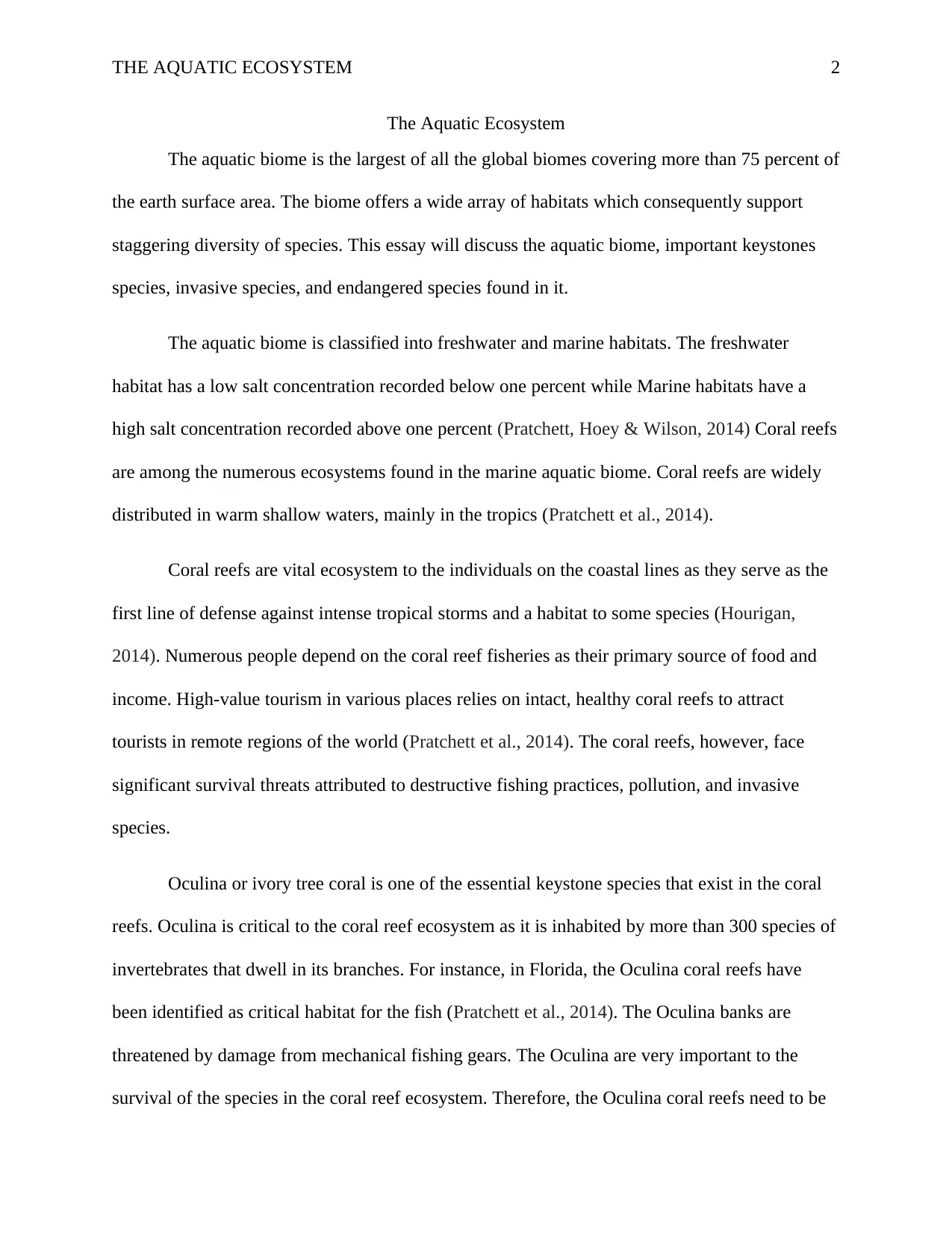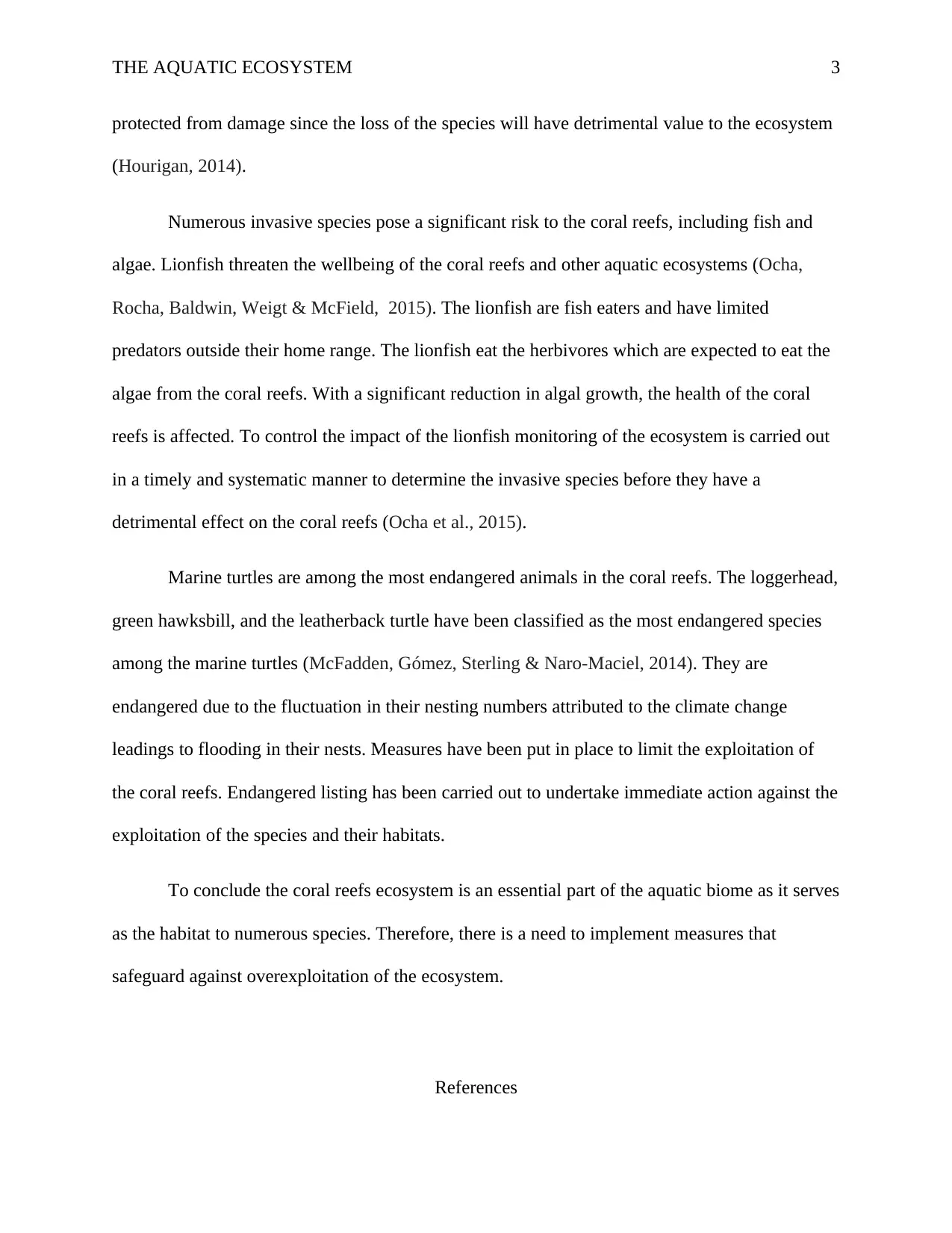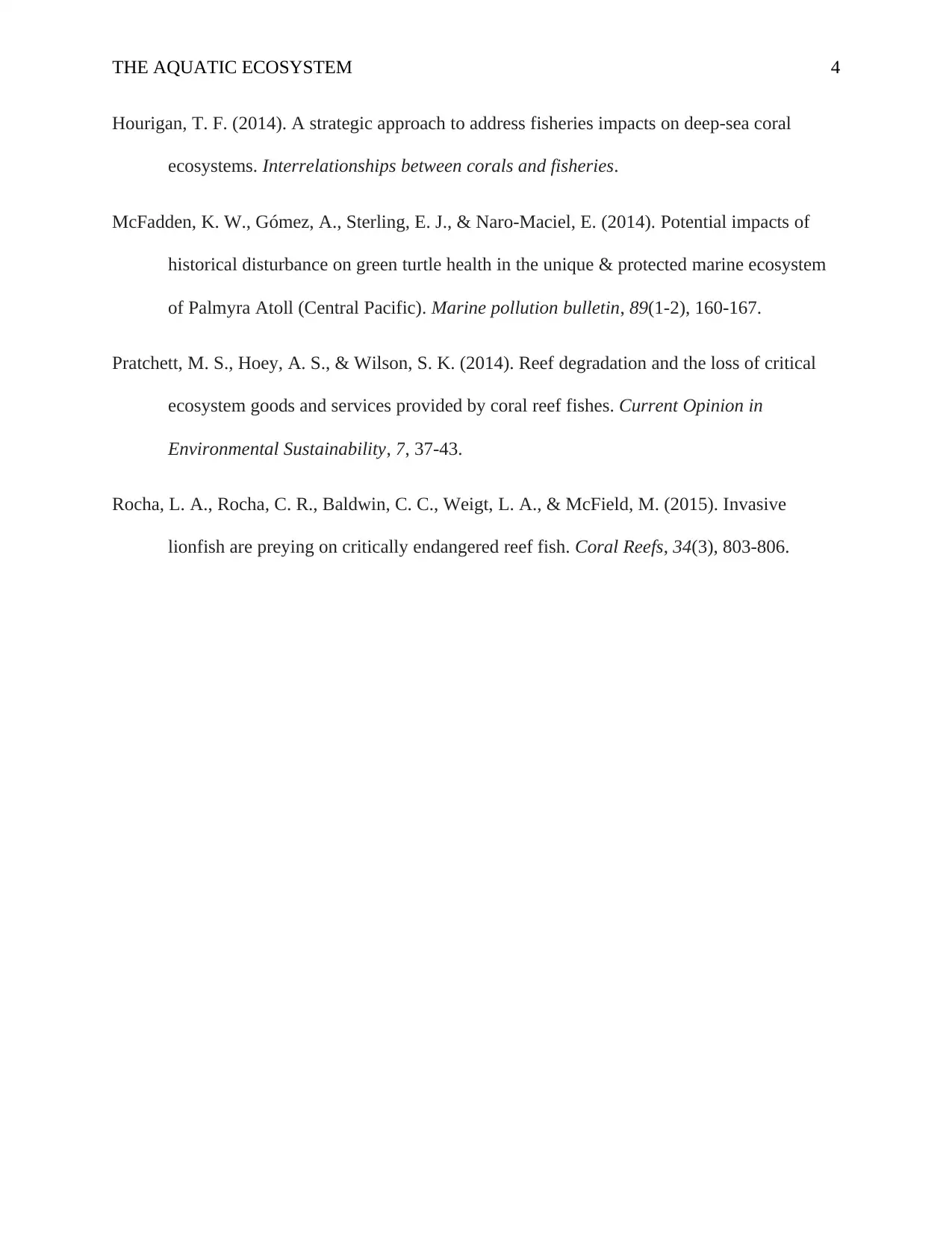An Analysis of the Aquatic Ecosystem and Conservation Efforts
VerifiedAdded on 2022/10/09
|4
|855
|25
Essay
AI Summary
This essay provides an overview of the aquatic ecosystem, which covers over 75% of the Earth's surface and supports a vast array of species. It delves into the classification of aquatic biomes into freshwater and marine habitats, with a specific focus on coral reefs as significant ecosystems. The essay highlights the importance of coral reefs, particularly as habitats and coastal defenses, while also addressing the threats they face, such as destructive fishing practices, pollution, and invasive species. It discusses the Oculina coral as a keystone species and examines the impact of invasive species like lionfish. Furthermore, the essay addresses endangered species, such as marine turtles, and underscores the need for conservation measures to protect the aquatic ecosystem from overexploitation.
1 out of 4






![[object Object]](/_next/static/media/star-bottom.7253800d.svg)